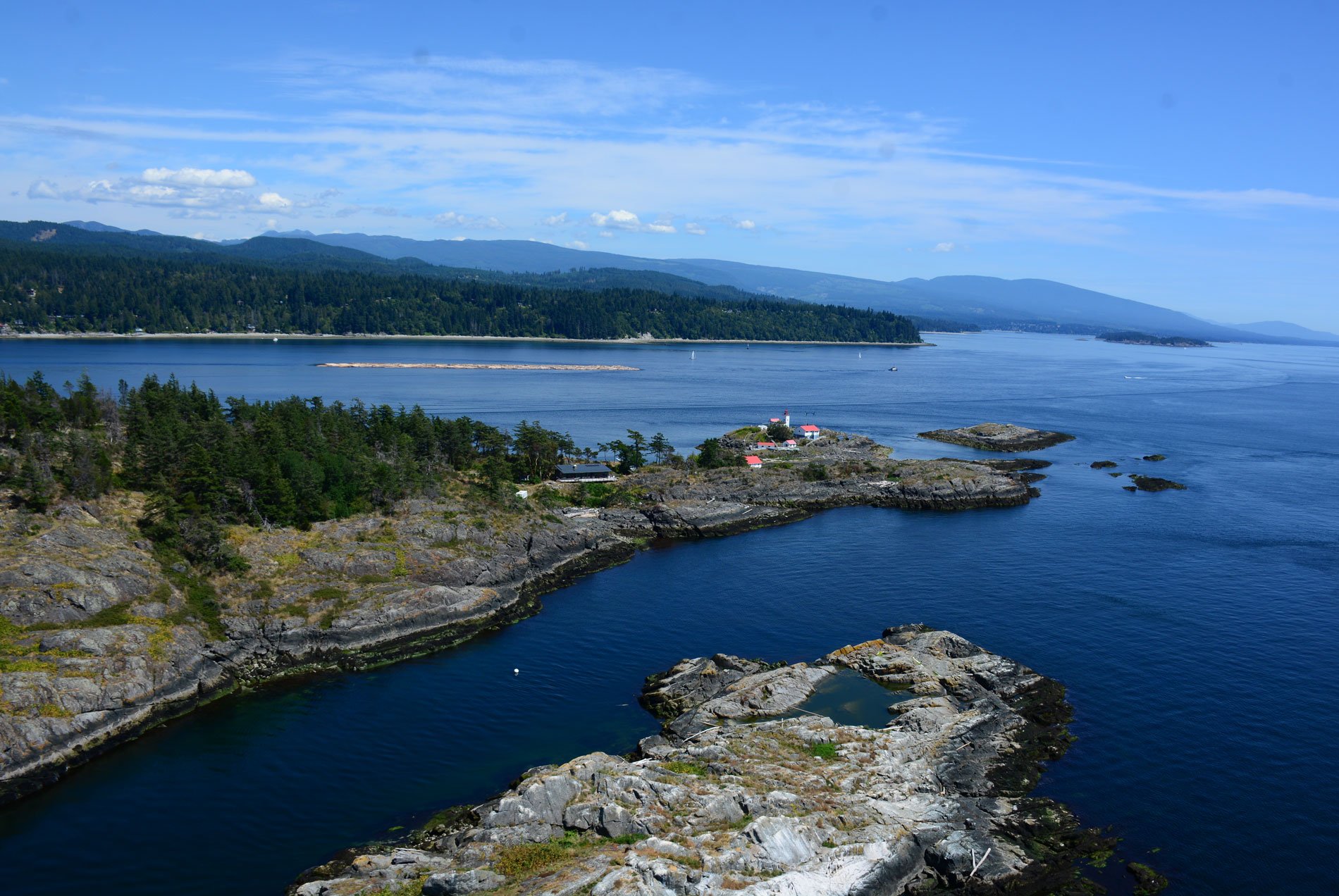Merry Island is situated at the southern entrance to Welcome Passage in Malaspina Strait, between the Thormanby Islands to the west and the Sunshine Coast, about 39 miles (63 km) west-northwest of Vancouver and 3 miles (5 km) south of Halfmoon Bay, British Columbia. The island was named in 1860 by Captain George H. Richards on the HMS Plumper during the British Admiralty surveys of the Salish Sea. Richards reputedly abandoned Royal Navy names on arrival in Halfmoon Bay because at that point in the survey he received news that the race horse Thormanby had just won the 1860 Epsom Derby. Richards named the two large islands to the west of his position North and South Thormanby, and named a smaller island in honor of James Merry, the horse’s owner. The channel that passes between these islands and the mainland he named Welcome Passage.
The island is formed mostly by granite and granodiorite from Jurassic igneous intrusions in basalt flows that date to the Triassic, or about 250 million years ago. During the Late Jurassic, a large volcanic arc system developed as a result of tectonic subduction of the Kula Plate under the North American Plate. This created the Coast Plutonic Complex, the largest single body of granitic rock in North America, that extends from northern Washington through British Columbia and the Alaska Panhandle to southwestern Yukon. The present-day landscape of Merry Island is a result of repeated Pleistocene glaciations. After the glaciers receded about 10,000 years ago, the first humans arrived and are the ancestors of Coast Salish peoples. The Sunshine Coast is the traditional territory of the Sechelt or Shishalh First Nation, who historically had at least four major villages and many seasonal camps used to hunt, fish, and gather food. In 1792, Captain George Vancouver encountered the Sechelt and noted that they were already expert traders and bartered with them for food.
From the beginning of the British colonial period in 1858 to Canadian Confederation in 1871, vessel traffic in the Strait of Georgia increased exponentially, particularly during the various gold rushes to the Fraser River, the Klondike, and Alaska. As vessels traveled between Vancouver and points northward, they would often transit through Welcome Pass. In 1901, the Vancouver Ship Masters Association petitioned for a lighthouse and fog alarm on Merry Island to aid navigation in the dark and during foggy weather. In 1903, funds were allocated for a light station on the southeastern point of Merry Island. The original structure was a wooden building, which was replaced in 1966 with a concrete structure. The Merry Island Lighthouse consists of a square base, with a tower rising 40 feet (12 m) from the corner of the building. There are five related structures on the site that contribute to the heritage character of the lighthouse including the principal lightkeeper’s residence, the junior lightkeeper’s dwelling, a storage shed, a boathouse, and a bulk fuel storage system. Read more here and here. Explore more of Merry Island and Malaspina Strait here:

